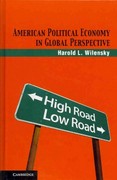3. Consider an economy in which the reserve requirement is 25%. (3) Suppose that currency in the amount of $35,000 is deposited into a. bank as demand deposit. Subject to the reserve requirement, the bank keeps 25% of the deposit as reserve and lends the rest to borrowers. Suppose that the borrowers keep the borrowed money in cash. How would this change the money supply in the economy? (13) Suppose that the borrowers in (a) eventually got their borrowed money deposited into the banking system. Further suppose that no bank in the economy keeps excess reserve and no one keeps their money in cash. How would the initial deposit of $35,000 into the banking system change the money supply? (6) Using the change in money supply you nd in (b) as the benehmen'lr.1 evaluate how each of the following scenarios will result in a different change in money supply from the same initial deposit of $35,000 into the banking system. [State whether the change in money supply in each scenario is larger or smaller than what you nd in (b) and provide an explanation] (i) The reserve requirement decreases to 20%. (ii) Some of the banks in the economy keep excess reserve. (iii) Some of the citizens in the economy keep part of their money in cash. (iv) Electronic payment becomes the norm in the economy as it is moving toward a cashless economy (no one uses cash anymore). The money deposited into the electronic-payment companies {like Ahpay in China] is used as medium of exchange, and therefore those deposits are considered as part of the money supply. However, these companies do not have bank licenses. The deposits held by them are not allowed to be loaned out. (v) The same situation as in (iv), except that those electronic-payment companies can now loan their deposits out. They are, however, not regulated as banks and thus are not subject to any reserve requirement. They are more aggressive than regulated banks in making loans. a). Now, let's assume that the currency in the amount of \"$35,000\" is deposited into the bank. The bank keeps the 25% of the deposits as reserved and lends the rest to the borrowers and the borrowers keep the borrowed money in cash, => increase in money supply is given by, => $35,000 + $35,000*0.75 : $61,250. 80, in the 15" round as the \"$35,000\" deposited, => money supply increased by \"$35,000\a). Now, let's assume that the currency in the amount of \"$35,000\" is deposited into the bank. The bank keeps the 25% of the deposits as reserved and lends the rest to the borrowers and the borrowers keep the borrowed money in cash, => increase in money supply is given by, => $35,000 + $35,000*0.75 : $61,250. 80, in the 15" round as the \"$35,000\" deposited, => money supply increased by \"$35,000\









